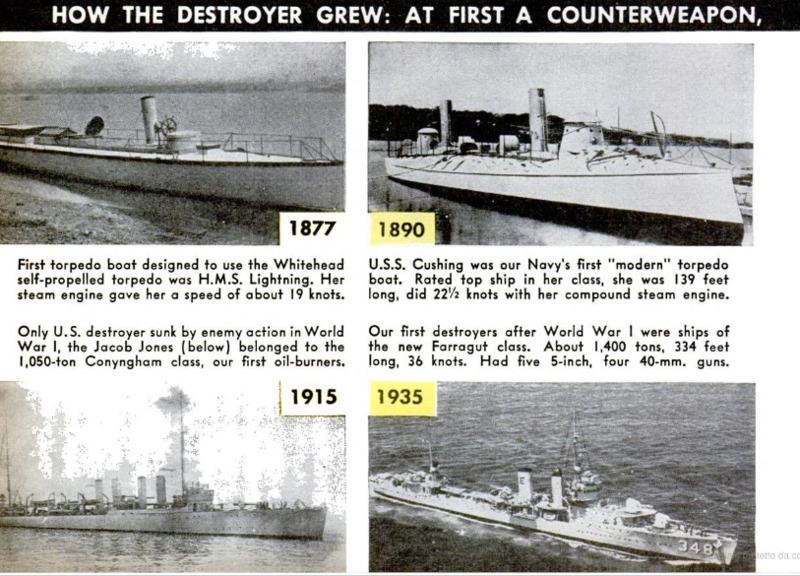-
Title (Dublin Core)
-
The destroyer's weapons
-
Article Title and/or Image Caption (Dublin Core)
-
The destroyer's weapons
-
extracted text (Extract Text)
-
the Borie spotted a U-boat, which crash-
dived. Depth charges brought it back to the
surface, and the Borie rammed it. Freeing
itself, the sturdy submarine attempted to
torpedo the destroyer. But a well-placed
shell from the Borie carried away the U-
boat's conning tower and ended the battle.
The stern of the submarine tilted skyward,
and it nose-dived to the bottom. Severely
damaged in the encounter, the destroyer
stayed afloat only long enough for another
ship to rescue nearly all of her crew. In
memory of her valiant fight, her name has
been reassigned to one of our newest super-
destroyers.
Laying a smoke screen—an important
destroyer mission—contributed to the
smashing American naval victory in
the Second Battle of the Philippines,
now officially renamed the Battle for
Leyte Gulf. When a powerful Japa-
nese fleet made a surprise sortie
from the central channel, guarded
only by our light carriers and de-
stroyers, the tin cans raced between
the opposing forces, billowing dense
smoke. Two of them, the Hoel and
the Johnston, failed to come back.
But under their cover, the carriers
were able to launch their planes,
and, having done all they could, to
retire until American reinforcements
put the bomb-battered Japs to flight.
In a full-dress fleet action, normal-
ly covering a vast expanse of sea,
destroyers do the infighting—attack-
ing enemy destroyers, cruisers, and
battleships as they charge across the
distance between the majestic lines
of big vessels. Two of our own major
naval engagements—the Battle of
Guadalcanal and the Battle for
Leyte Gulf—gave our destroyers
their chance against battleships,
though the narrow waters in which
they took place turned stately ma-
neuvers into wild melees.
Lasting only 24 minutes, the mid-
night Battle of Guadalcanal has
been termed by Fleet Admiral
Ernest J. King one of the most furious sea
actions in history. In that time, an out-
matched American force of five cruisers and
eight destroyers repulsed a Japanese task
force of two battleships and 16 other war-
craft bent on recapturing the island from
American invaders. “We want the big
ones,” radioed the American commander,
Rear Admiral Daniel J. Callaghan. So the
destroyer Laffey, having put a Jap cruiser
out of action, fired two torpedoes into a bat-
tleship—and then, cutting past its bow,
raked it with gunfire and blew off its bridge.
Unable to depress its guns, the Jap had no
reply to this American impudence until the
Laffey put one destroyer out of commission,
blew up another, and then was sunk by bat-
tleship fire. Meanwhile several other U.S.
destroyers scored torpedo hits on battle-
ships, the O'Bannon being credited with
three.
It was also before daybreak when a
Japanese force headed by two battleships
attempted to traverse the southernmost
channel through the Philippines, in the
three-ring Battle for Leyte Gulf, last Octo-
ber. At this point, Vice Admiral J. B. Olden-
dorf was ready for them. Since the narrow
channel of Surigao Strait gave him little
room to deploy his destroyers, he lined them
up along the shore, backing up this advance
force with cruisers and battleships. Steam-
ing squarely into the trap, the Japanese
vessels suffered three co-ordinated destroyer
attacks with torpedoes, and salvoes from
our heavy ships then finished off the two
Japanese battleships and virtually the en-
tire contingent.
Just how a destroyer aims and fires its
torpedoes, by the way, makes an interesting
contrast with undersea boats. Submarines
discharge them under water, with com-
pressed air. But it takes more than a Whiff
of breeze to toss overboard a Mark 15 de-
stroyer torpedo, more than 20 feet long and
weighing 3,400 pounds with its war head of
TNT. So the torpedo gets its start from an
“impulse charge” of black powder.
Sitting astride a bank of tubes, a torpedo-
man’s mate re-
sponds to the order “Stand by to fire” by
turning a training wheel, keeping the tubes
in line with a red arrow. Above him in the
fire-control tower, the torpedo officer plots
the relative speed and course of the enemy
ship and his own. Then he presses a firing
key, and the torpedo leaps from its tube.
It has been preset to travel at a depth that
will do the most damage to_its target—
which might be five to 10 feet for another
destroyer, or at least 20 feet for a battleship
or aircraft carrier. On striking the sea, it
automatically submerges to this level, and
gyro-controlled rudders hold it on an abso-
lutely straight course up to 6,000 yards,
driven by its compressed-air motor and tiny
twin propellers.
Early in the war, a division of U.S. de-
stroyers, with one lone torpedo left among
the four vessels, had the disconcerting ex-
perience of meeting a Japanese cruiser and
its destroyer escort in the Java Sea. In-
stead of being able to attack, the American
force was in danger of being sunk, if the
Japs guessed its plight. So its commander
ordered impulse charges to be fired in empty
tubes, giving the same flash that the enemy
would see if they were on the receiving end
of real torpedoes, The bluff worked, and the
ships of the Emperor turned tail.
Ask a veteran destroyer commander
when he has come closest to death, as the
writer once did, and he replies with a grin,
“All the time.” Odd jobs that destroyers per-
form often are as perilous as fighting. The
U.S.S. Maury, whose battle log reads like
a history of Pacific warfare, served as a
tugboat in the midst of the last Japanese
naval attempt to reinforce the Nips on
Guadalcanal. Taking the disabled cruiser
New Orleans in tow, the Maury brought her
to safe waters through hostile fire and, be-
cause of reduced speed, imminent risk of
submarine attack.
When waterlogged survivors from sunk-
en warcraft are fished from the sea, de-
stroyers usually are the rescue ships. A tin
can is anything but spacious, yet the Fletch-
er—normal complement about 250—some-
how managed to take aboad 700 officers and
men from the sinking U.S. cruiser North-
ampton during the series of Solomon Island
sea engagements.
When strategists set forth to show that
every war weapon meets its match in a
counterweapon, their favorite example is
the torpedo boat versus the destroyer. Away
back in 1860, admirals of the world’s great
naval powers were scared stiff by the inven-
tion of the Whitehead self-propelled tor-
pedo. Their peace of mind was by no means
restored when Britain, in 1877, built the
first torpedo boat to use the new weapon
effectively. The steam-driven, 85-foot H.M.S.
Lightning attained what was then the high
speed of 19 knots, and carried a torpedo
tube in its bow. Other countries adopted the
innovation, and by 1890 the U.S. Navy
possessed the 139-foot, 22%-knot torpedo
boat Cushing, regarded as the top ship of
her class.
What good were mighty armor-clads,
long-time rulers of the seas, when craft of
such insignificant size could sink them?
Fuel was poured on the controversy when,
during the Chilean civil war of 1891, a
cruiser was sunk by a Whitehead torpedo.
The man with the answer was Sir William
White, chief constructor of the British
Navy. He proposed to build ships similar to
torpedo boats but enough faster and more
heavily armed to sink them. The result was
the world's first torpedo-hoat destroyer,
HM.S. Havock, a 180-footer of nearly 27
knots, armed with one 12-pounder, three
quick-firing six-pounders, and three torpedo
tubes. An immediate success, the ship was
followed by the first U.S. torpedo-boat de-
stroyer, the 210-foot, 273-ton U.S.8. Farra-
gut, which attained more than 30 knots—a
record speed for reciprocating engines.
From the turn of the century on, engi-
neering improvements came in rapid suc-
cession, and destroyers—having lost their
longer name as they became major warships
—gained in size and power. Our Truzton
class of 1900 were 435-tonners. By 1909 our
Flusser class, first American turbine-driven
destroyers, and first to mount three-inch
guns, displaced 700 tons. The first U. S. oil-
burning destroyers, the Conyngham class of
1915, tipped the scales at 1,050 tons.
First to follow World War I, a new Farra-
gut class of 1934-5 consists of 1,400-tonners,
334 feet long, armed with five 5-inch and
four 40-mm. guns. Our last prewar destroy-
ers, the 1,600-ton Benson class of 1940-1
now are supplemented by the 1,700-ton
Bristols, the 2,100-ton Fletchers, and the
2,200-ton Sumners.
Formerly, the limited cruising range of
destroyers held back all the rest of the fleet.
How we are currently able to pound at the
gates of Tokyo can now be told. One means
has been the fuel-saving use of high-tem-
perature, high-pressure steam, first intro-
duced in the U. S. Navy by destroyers of the
Mahan class between 1936 and 1940. But
perhaps the most important innovation is
that of seagoing supply and repair bases.
-
Language (Dublin Core)
-
eng
-
Date Issued (Dublin Core)
-
1945-07
-
pages (Bibliographic Ontology)
-
131-134,203
-
Rights (Dublin Core)
-
Public domain
-
Archived by (Dublin Core)
-
Sami Akbiyik
-
Marco Bortolami (editor)
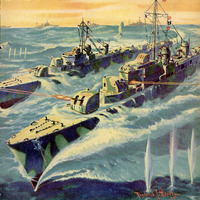 Popular Science Monthly, v. 147, n. 1, 1945
Popular Science Monthly, v. 147, n. 1, 1945
 Screenshot 2023-01-19 172021.png
Screenshot 2023-01-19 172021.png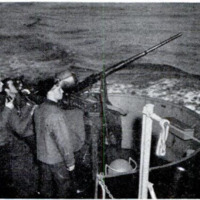 Screenshot 2023-01-19 172032.png
Screenshot 2023-01-19 172032.png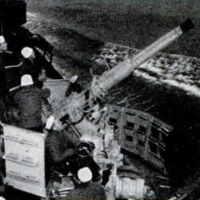 Screenshot 2023-01-19 172044.png
Screenshot 2023-01-19 172044.png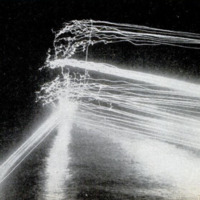 Screenshot 2023-01-19 172054.png
Screenshot 2023-01-19 172054.png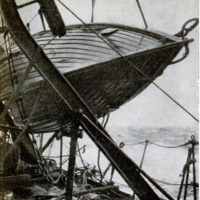 Screenshot 2023-01-19 172105.png
Screenshot 2023-01-19 172105.png Screenshot 2023-01-19 172120.png
Screenshot 2023-01-19 172120.png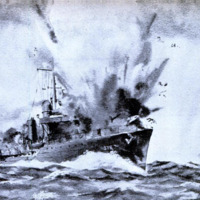 Screenshot 2023-01-19 172132.png
Screenshot 2023-01-19 172132.png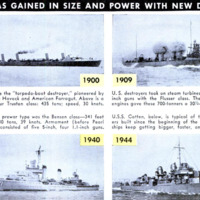 Screenshot 2023-01-19 172144.png
Screenshot 2023-01-19 172144.png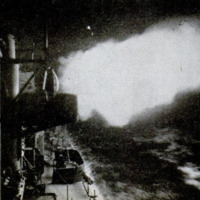 Screenshot 2023-01-19 172159.png
Screenshot 2023-01-19 172159.png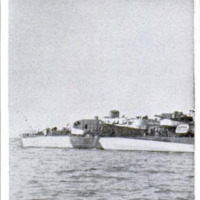 Screenshot 2023-01-19 172210.png
Screenshot 2023-01-19 172210.png





